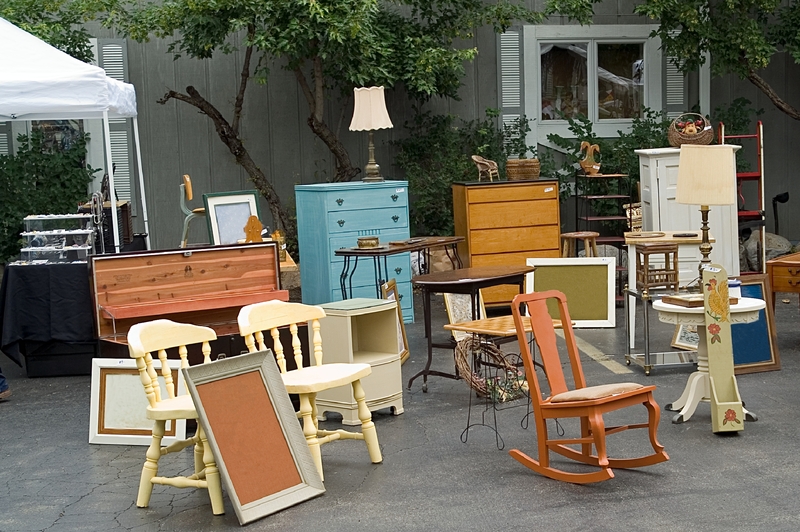Making Room: Learn the Best Ways to Get Rid of Large Furniture
Do you have an old sectional, heavy dresser, or an outdated mattress taking up valuable space? You're not alone. Many homeowners and renters face the challenge of figuring out how to remove large furniture from their homes, especially when it's no longer needed or in use. In this comprehensive guide, we'll cover the best ways to get rid of large furniture, ensuring you reclaim your space with ease. Read on to discover eco-friendly, cost-effective, and efficient solutions suited to every need.
Why It's Crucial to Remove Unwanted Large Furniture
Most homes accumulate bulky items over time -- old sofas, massive wardrobes, tired recliners, or hefty desks. These pieces can quickly overwhelm your living space, making it difficult to reconfigure rooms, host guests, or simply enjoy a clutter-free environment. More importantly, getting rid of large furniture is essential for:
- Maximizing Space: Free up square footage for new furniture, hobbies, or play areas.
- Improving Safety: Reduce tripping hazards and make your home easier to navigate, especially for children or seniors.
- Simplifying Moves: Save time and money when relocating by minimizing excess weight and bulk.
- Enhancing Aesthetics: Refresh your interiors and make way for new decor or design schemes.
It's not just about removing something big; it's about making room for your lifestyle.

Assessing Large Furniture for Removal
Before you begin, take a moment to evaluate the condition and feasibility of removing your furniture. Here's what to consider:
- Is it damaged beyond repair? If your item is broken, stained, or infested with pests, disposal may be your only option.
- Is it still usable? If yes, donating or selling becomes possible, helping your community and the environment.
- Can it be dismantled? Disassembling large furniture makes removal safer and easier.
10 Best Ways to Get Rid of Large Furniture
1. Donate to Charities and Non-Profits
One of the most impactful and rewarding solutions is donating your large furniture. Organizations such as Goodwill, Habitat for Humanity ReStores, and local shelters often welcome gently-used furniture.
- Check Guidelines: Ensure your furniture meets their requirements for condition and cleanliness.
- Schedule a Pickup: Many charities offer free furniture pickup for bulky pieces.
- Request a Tax Receipt: Your donation may qualify for a tax deduction.
Donating is eco-friendly and helps support your community, making it a top choice for responsible disposal.
2. Sell Online or Through Apps
Consider turning your unwanted items into cash through online marketplaces such as:
- Facebook Marketplace
- Craigslist
- OfferUp
- LetGo
- eBay (for specialty or antique pieces)
Tips for success:
- Take clear, well-lit photos showing the entire piece and any flaws.
- Write a detailed description and accurately list measurements.
- Be upfront about condition to build trust with buyers.
- Arrange safe, contact-free pickups for convenience.
Not only do you reduce waste, but you might also make a profit!
3. Curbside Giveaway or Curb Alert
If you're eager to get rid of large furniture quickly, placing items at the curb with a "Free" sign can attract treasure hunters. Additionally, post a curb alert on community platforms. Best practices include:
- Check local regulations before leaving items outside.
- Keep items dry and in good visible condition.
- Remove quickly if not picked up, to avoid fines.
This method is simple, fast, and totally free.
4. Hire Professional Junk Removal Services
For those looking for efficiency and zero hassle, hiring a junk removal company can be the ideal solution. These services:
- Handle all lifting and hauling, even from multi-story apartments.
- Sort items for reuse or recycling where possible.
- Offer same-day or scheduled pickups.
Popular providers include 1-800-GOT-JUNK?, College Hunks Hauling Junk, and many local alternatives.
Tip: Compare quotes and check reviews for the best price and service!
5. Use Municipal Bulk Waste Pickup
Many cities and towns offer bulk furniture pickup as part of their regular waste management service. Here's what to know:
- Availability and frequency vary by municipality -- some are weekly, others monthly, or by appointment.
- Restrictions may apply on items accepted (e.g., mattresses, electronics).
- Schedule pickups in advance to avoid fines for leaving items curbside outside designated times.
Check your local government website for detailed instructions on large furniture disposal.
6. Host a Garage or Estate Sale
If you have multiple furniture pieces and other household items, consider organizing a sale. Benefits include:
- Sell and remove items simultaneously.
- Engage with buyers personally and negotiate prices.
- Advertise locally for best results (signs, online, neighbors).
Anything unsold can then be donated, recycled, or disposed of accordingly.
7. Recycle or Upcycle Large Furniture
Environmentally conscious homeowners often seek sustainable solutions. Large furniture that's damaged or unwanted still holds value as recyclable material or creative projects. Try:
- Contacting local recycling centers -- many accept wood, metal, and some plastics.
- DIY upcycling -- convert dressers to planters or sofas to outdoor benches with a little creativity.
- Repurposing hardware -- salvaged knobs, drawers, or frames can be reused.
Recycling keeps furniture out of the landfill and gives materials a second life.
8. Gift to Friends, Family, or Neighbors
Sometimes, your unwanted sectional is the perfect fit for someone you know. Consider offering furniture to:
- College students furnishing dorms or apartments.
- Friends or relatives moving into new homes.
- Neighbors looking to upgrade or furnish their spaces affordably.
Sending a friendly message or photo may find your furniture a new home in no time!
9. Swap Online or at Local Events
Furniture swaps are growing in popularity. Participate by:
- Listing your items on local Facebook groups or swap apps.
- Attending community swap meets or flea markets.
- Trading your large furniture for something more suited to your current needs.
Swapping is economical and fosters a sense of community.
10. Responsible Disposal at the Landfill
If none of the above options work, you may need to transport your furniture to a local landfill or transfer station. Ensure you:
- Pay any required disposal fees.
- Follow all local guidelines for transporting and disposing of bulky items.
- Look for designated drop-off days in your area for furniture and large waste.
Disposal should always be a last resort after exploring sustainable alternatives.
Essential Tips for Safe and Smooth Removal of Large Furniture
- Protect your property: Use furniture sliders, blankets, or moving straps to avoid damage to floors and doorways.
- Disassemble when possible: Remove legs, drawers, or backs from sofas and wardrobes to make moving easier and safer.
- Enlist help: Ask friends or hire movers if furniture is particularly heavy or unwieldy.
- Measure your exits: Ensure furniture will fit through doors, hallways, and elevators.
- Clear your path: Remove rugs, clutter, or obstacles in advance.
- Use appropriate vehicles: Rent or borrow a truck for hauling, if necessary. Secure items properly for transport.
- Wear protective gear: Sturdy gloves and closed-toe shoes can help prevent injuries.
Frequently Asked Questions (FAQs) on Getting Rid of Large Furniture
What's the easiest way to get rid of large furniture?
The easiest way is often to call a professional junk removal service, especially if you want fast, hands-off removal. Donation pickups are also convenient if your item is in good condition. For quick DIY solutions, curbside giveaways work well in dense neighborhoods.
Is it illegal to leave furniture on the curb?
Check your city's rules: Many municipalities prohibit leaving large items curbside except on designated collection days. You could face fines if you don't comply.
Can I recycle broken or old furniture?
Some pieces can be recycled, especially those made primarily from wood, metal, or un-upholstered materials. Check with your local facility for their guidelines.
How can I move large furniture safely?
Disassemble what you can, and always lift with your legs, not your back. Use tools like sliders, dollies, and straps. When in doubt, get help.

Eco-Friendly and Sustainable Furniture Removal Options
More and more, people are seeking sustainable ways to get rid of bulky furniture. Here's how you can minimize your environmental impact:
- Prioritize reuse and donation to give your items another life.
- Recycle whenever possible, especially for materials like metal, untreated wood, and some plastics.
- Explore creative upcycling projects -- from turning doors into tables to transforming bookshelves into mudroom benches.
- Choose companies or charities with sustainable practices when arranging pickups or disposal.
Every piece diverted from the landfill makes a difference!
Conclusion: Making Room for a Better Home
Whether you're clearing out a cluttered attic, preparing for a move, or simply needing a change, knowing the best ways to get rid of large furniture is key to creating a more organized and enjoyable home. From donation and resale to recycling and professional removal, there are numerous practical, responsible, and sometimes profitable solutions at your fingertips.
Remember: The approach you choose should reflect your timeline, budget, available help, and environmental values. Take a little time to explore your options, and soon you'll be making room for fresh possibilities!
Ready to Reclaim Your Space?
If you found these tips for getting rid of large furniture helpful, share this article with friends or bookmark it for future moves. Don't let unused, outdated, or worn-out furniture limit your freedom at home. Make the change now -- your spacious, refreshed living area is just a few smart moves away!